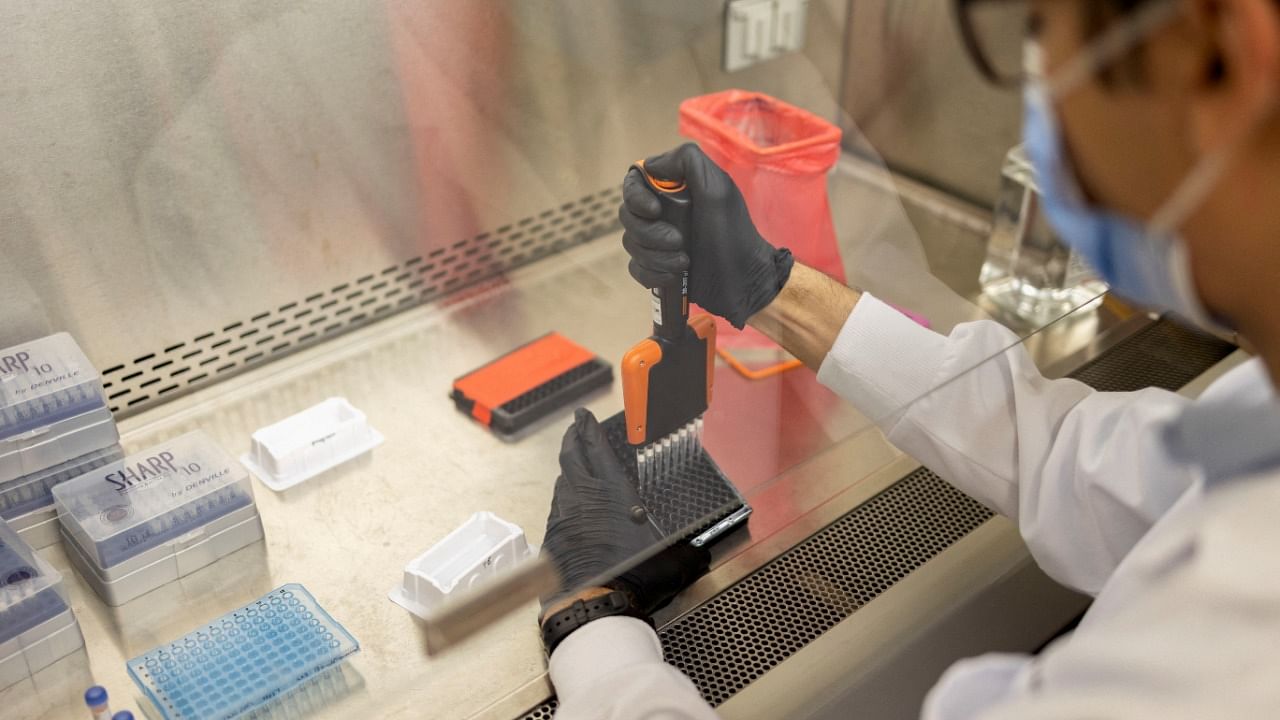
With Omicron the latest variant of the Sars-CoV-2 virus to be designated a 'variant of concern,' the focus once again shifts to genome sequencing and detection of the new variant that is a relatively fast-spreading variant than the Delta.
Simply put, genome sequencing is nothing but the scientific process to decode the genetic make-up of an organism or cell. Through genomic sequencing, the changes in the genetic make-up of the SARS CoV-2 virus can be noted and monitored, which is how over 30 variants of the Omicron were also detected.
The main parts of the genetic material of the SARS CoV-2 virus include the ORF1a protein, the ORF1b protein, the spike protein, and other smaller gene pieces like the E, N, M and Rd Rp genes, according to a report by TV18.
Dr Naveen Dang, Director of Dr Dangs Lab, detailed how Omicron is detected in genome sequencing and how is it different from other variants of concern.
“Different variants mean that there have been mutations in one or more of the genes. The previous mutants may also have a couple of mutations, but in Omicron, we have a very large number of mutations that have occurred, nearly about 50 mutations, and out of these nearly 30 are in the spike protein," Dang was quoted as saying by ANI.
The missing S-gene
When the Omicron variant was first identified, in South Africa, it was found that due to the mutation on the spike protein, a few amino acids that combine to form the protein were missing. This indicated the Omicron variant.
While RT-PCR tests can be used to detect cases of Covid-19, the missing S-gene target could be used to identify cases of the Omicron variant, according to the TV18 report.
Dang said that gene sequencing, depending on the suspected cases and the missing S-gene, is the indicator for the ultimate diagnosis of the Omicron variant. He said that S-gene target failure is a marker that should be looked out for.
“The S-Gene dropout, or as we say the S-gene target failure or SGTF, is one of the proxy indicators to (ascertain) whether or not it is the Omicron variant. But this is not necessarily so as the ultimate diagnostic tool is distinct for gene mutation," Dang was quoted, according to a report by Mint.
The Indian scenario
According to a report by Down to Earth, a fortnightly, India sequenced 115,101 samples in all, as of November 8, 2021. India sequenced 53,562 samples and analysed 46,676 of these between July 26 and November 8, data from the SARS-CoV-2 Consortium on Genomics (INSACOG) revealed.
INSACOG, set up in December 2020, uses “sentinel sequencing effort” — random testing in the community — to track variations of the SARS-CoV-2 through several laboratories across India to help the public health response, the publication stated.
INSACOG was set up by the Union health ministry and the Department of Biotechnology in association with ICMR, comprising 28 genome sequencing labs. More private players are expected to join the consortium to boost genome sequencing efforts.
However, Dang said that most tests in India were previously not testing the S-gene due to a lack of requirement for the same.
“But if we have a test in which you have multiple genes, and one of the genes included in the SG and if the test shows positive for all the genes but negative for S-gene, we can say that this is an S-gene dropout or S-gene failure target failure," he said.
Dang said that in such a situation, by proxy, we can say that this is Omicron. "We send such samples for gene sequencing studies. So once that is done only then only it can confirm whether it is the variant or not."
Watch the latest DH Videos here: